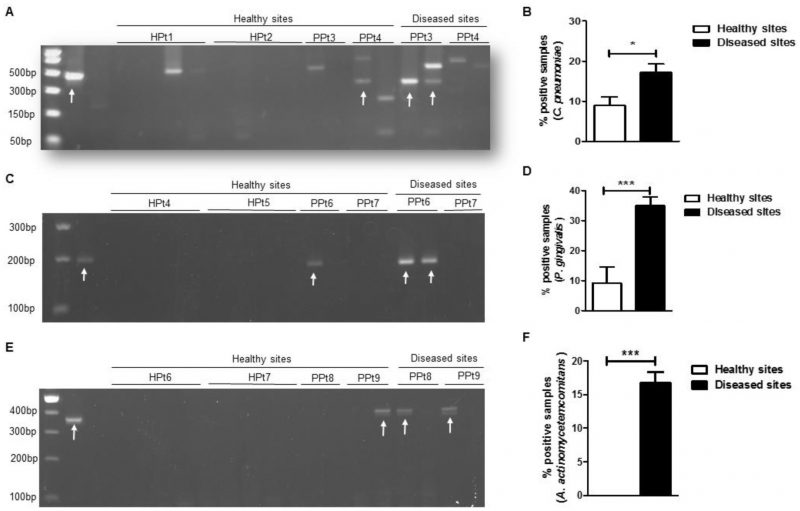Back to article: Chlamydia pneumoniae is present in the dental plaque of periodontitis patients and stimulates an inflammatory response in gingival epithelial cells
FIGURE 1: C. pneumoniae is present more frequently in subgingival plaque obtained from periodontally diseased sites vs. healthy sites. Dental plaques were obtained from subgingival locations in ten healthy patients (HPt, four sites for each one) and in ten patients with periodontal disease (PPt). For patients with periodontal disease, subgingival dental plaques were obtained from both areas with periodontitis (P, two sites per subject) and areas without periodontitis (H, two sites per subject). All dental plaque samples were subjected to PCR followed by agarose gel electrophoresis. (A, C, E) Representative gel electrophoretogram of PCR products screening C. pneumoniae (A), P. gingivalis (C) and A. actinomycetemcomitans (E). Quantification of C. pneumoniae (B), P. gingivalis (D) and A. actinomycetemcomitans (F) 16S rRNA, PCR products. (B, D, F) Healthy sites: n = 40 (only from healthy donors) and diseased sites: n = 20. For each dental plaque sample, seven different runs were performed for C. pneumoniae and three different runs for P. gingivalis and A. actinomycetemcomitans. Arrows indicate positive bands in the expected bp size. Error bars represent ± SD; 2-sided, paired Student's t test, *P ≤ 0.05, ***P≤0.001.

